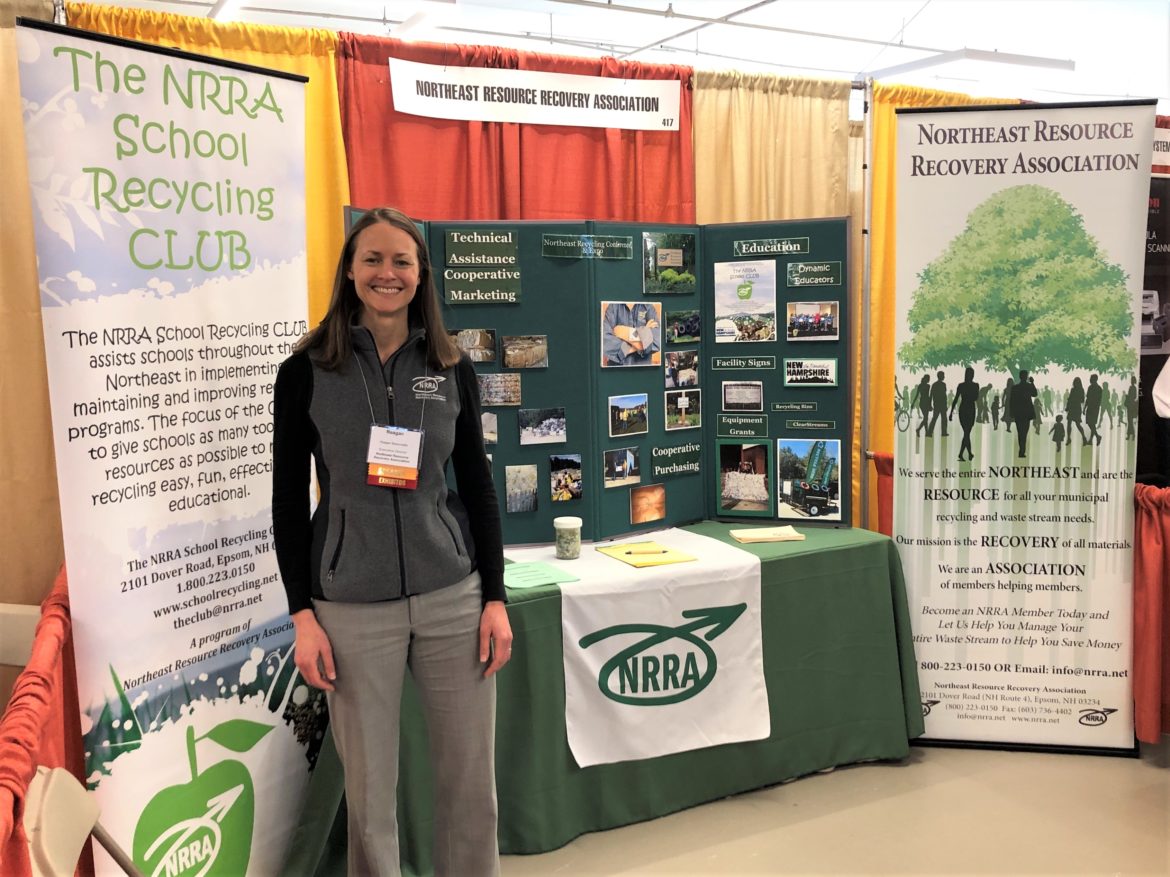Editor’s note: This story was co-published with New Hampshire Business Review
By Sara Persechino, InDepthNH.org
“If I had to describe the impacts of COVID-19 on the recycling industry, I would say it’s crazy,” says Marc Morgan, solid waste manager for the City of Lebanon.
He adds, “For the longest time, there were very seasonal and cyclical trends…COVID is very strange because it’s really shaking societal norms.”
With more people working from home and students from Dartmouth sent home during the height of COVID, the Lebanon Regional Solid Waste Facility, which serves approximately 90,000 people in the Upper Valley, saw a decrease of commercial waste and recycling, but an increase in residential trash, especially as residents cleaned up their basements and attics.
Amidst the COVID waste disposal shakeup, Lebanon logged their best revenue year for recycling in 2020, and by July of this year they’d already reached their recycling revenue estimates.
The Northeast Resource Recovery Association, a membership based nonprofit that helps towns and cities sell their recyclables, reported recently that their more than 400 members throughout New England, many in New Hampshire, recycled almost 50,000 tons in 2020.
NRRA Executive Director Reagan Bissonnette says that is the equivalent of removing almost 22,000 passenger cars from the road for an entire year.
On top of environmental impact, increases in recycling rates can have economic gains for communities. Recycling is an income stream, whereas towns and cities pay to dispose of solid waste.
“Recycling markets, recycling pricing is thriving right now, in part because of the pandemic and in part, independent of the pandemic,” Bissonnette reports.
As habits changed during the pandemic, so did recycling markets. For example, Bissonnette says the markets for cardboard and paper, which makes up over half of the residential recycling stream, shot up at the very beginning of the pandemic as businesses and schools closed, and therefore stopped using and supplying those recyclable materials.
“The cardboard coming in our Amazon boxes to our homes became increasingly valuable because these companies still wanted to buy that material and turn it into new products,” Bissonnette says.
Similarly, when bars and restaurants suddenly shut down, beverage suppliers had no demand for their kegs and instead quickly switched over to aluminum cans. Suddenly, there was a shortage of cans, not because there wasn’t enough recyclable aluminum available, but because the companies that make the cans weren’t able to keep up with demand.
Bissonnette believes new habits created during the pandemic, like increased ecommerce and delivery services, won’t go away entirely and so demand for things like cardboard boxes will remain.
While NRRA works with communities directly, Bissonnette has advice for individuals.
First, she suggests harnessing your buying power.
“For recycling to actually work, material you put into your bin has to be acquired by a company that turns it into a new product and then someone has to buy that product. So one of the most important things that individuals can do is actually purchase products with recycling content,” Bissonnette explains.
Second, Bissonnette encourages individuals to ask their company or community to purchase recycled materials, like recycled paper.
Finally, she says people need to stop engaging in “wish cycling” – where they put something in their bin hoping that it will be recyclable, but ultimately it’s just turned into trash and that becomes a higher cost for communities.
Bissonnette advises, “Recycling is hyper local, so it’s very important to contact your recycling staff and your local transfer station staff to understand what can and cannot be included in your bin.”
In August, HB 413 was signed into law, a section of which establishes a statewide solid waste working group and a statewide solid waste disposal reduction goal.
“Under this legislation, the Department of Environmental Services will update the state’s solid waste plan, which will be made publicly available, and will include goals, strategies, and actions to reduce solid waste generation and to increase diversion through methods such as reuse, recycling and composting, and to achieve the state’s solid waste disposal reduction goal,” announced sponsor Senator David Watters, D-Dover, at the time of signing.
Previously, New Hampshire statute had a solid waste disposal reduction goal of 40% diversion by the year 2000, however, due to the way the goal was written, the NH Department of Environmental Services was unable to accurately measure progress. HB 413 establishes a new goal to reduce the quantity by weight of solid waste disposed by 25% by the year 2030 and by 45% by the year 2050.
In Lebanon, they have a campaign called “Refill Not Landfill” encouraging the community to stop creating waste, even if it’s recyclable.
“What I’ve been pushing is actually a concept of not producing waste. We need to get away from recycling being our savior,” Morgan says.
Morgan points to bottled water as an example.
“We’re okay with drinking bottled water because I can recycle that bottle, but the production of that bottle still produces waste,” Morgan explains. “Why not carry a travel mug or a water bottle?”
A cultural shift started in Lebanon before the pandemic, but Morgan says COVID catapulted it, especially in the arena of paper waste as employees working from home relied more heavily on electronic communication as opposed to print memos, etc. At the Lebanon landfill, they’re going digital, too, moving toward a QR code system for waste disposal as opposed to paper billing.
Morgan says, “It’s that model of not producing it in the first place – even though you could recycle.”





